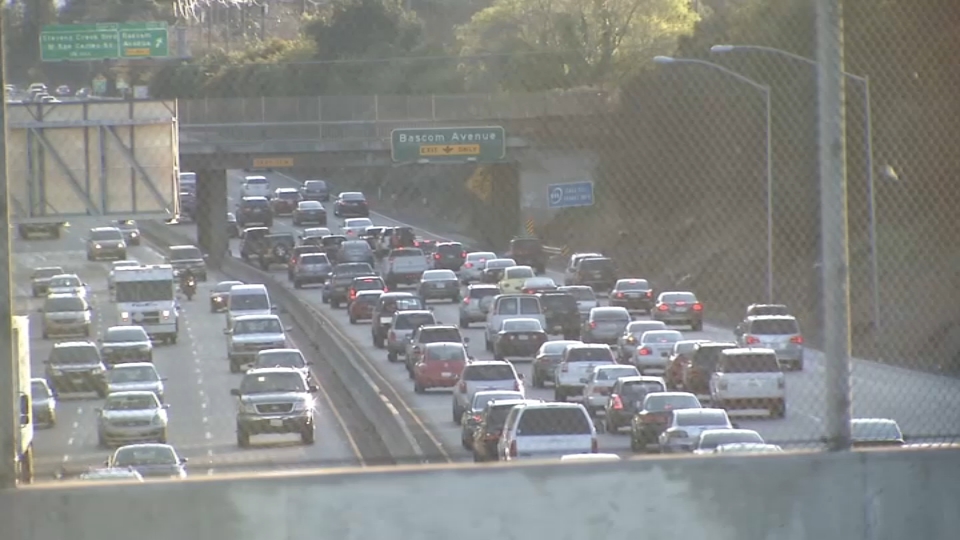The Anderson Reservoir, the largest in Santa Clara County, is too full, per government regulators, so the water district is unleashing much of storm water flowing into the reservoir, as officials said it is too unsafe to collect it. Otherwise, they fear, if a major earthquake were to strike while the water level is so high, there is a chance the dam could fail.
A new $400 million seismic retrofit of the reservoir is at least three years away.
As of Friday morning, the reservoir was 86.5 percent full, according to data provided by the Santa Clara Valley Water District.
Per regulations set by the state and federal governments, the reservoir should be no more than 68 of capacity. That's because the Morgan Hill reservoir is in an earthquake zone, district spokesman Marty Grimes said in an interview Friday. It's also because it was built in 1950, when the seismic standards and knowledge were less than than they are today.
"The real motivation is letting people who live in the shadow of the dam know about this earthquake vulnerability," Grimes said. "And they're understandably concerned."
If the reservoir were in a different spot, for instance, Kansas, where there aren't earthquakes, this wouldn't be an issue.
The Anderson Dam is under the regulatory jurisdiction of the California Division of Safety of Dams and the Federal Energy Regulatory Commission. It's the largest of the 10 Santa Clara Valley Water District reservoirs and was named after a key founder of the district, Leroy Anderson. It is a long, deep natural gorge located three miles east of U.S. Highway 101 in Morgan Hill.
Local
Excess Water Gushes Out From the Anderson Dam
Because the reservoir is over safety capacity, which was evident on Friday morning by the massive amounts of rushing water that sounded like Niagara Falls, water district officials are letting a lot of the recent rain water go — a frustrating fact following five years of drought.
Instead of collecting and storing the water, Grimes said, the district is releasing all incoming water into the nearby Coyote Creek, which then flows to the San Francisco Bay, and then the Pacific Ocean.
"It's not water we can use," Grimes said. "There are just the physical realities. Unfortunately, we can't keep the reservoir full."
The water district will continue to release water from the dam's outlet into the Coyote Creek until the water level falls below the restricted level, which could take 4 to 9 weeks, District Board Chair John L. Varela said in a letter to Morgan Hill residents on Thursday.
Varela also said that if a massive earthquake of 7.25 magnitude on the Richter Scale were to occur within two kilometers of the dam while the reservoir is full, it would be larger than any that has ever been recorded on the nearby Calaveras Fault, which would threaten the dam.
Anderson's outlet has been 100 percent open since Jan. 9, releasing water into Coyote Creek, at a rate of more than 400 cubic feet per second.
Valera said there's a chance that the dam could be damaged, but the probability of immediate dam failure is exceedingly remote.
Still, an earthquake could hit, which is why the district has been working on a seismic plan since 2009.
But the soonest the water district would start retrofitting and rebuilding a new reservoir would be in 2020, which would likely take at least four years to complete, Grimes said.
During that time, Grimes said that all the water in the current reservoir that couldn't be used for water supply purposes will also be released as crews build a modern foundation and remove a very large portion of the existing dam.
"We'll have to empty essentially all the water," Grimes said. "There's no other bucket" to store the water in.
The Anderson Dam retrofit project is slated to cost $400 million. Grimes said that a parcel tax will be for about $67 million of that, and the bulk of the remainder will come from increased water rates that will be spread out over 30 years.
For any questions surrounding seismic matters or the Anderson Dam Seismic Retrofit Project, call Hemang Desai at 408-630-3017 or Katherine Oven at 408-630-3126. For any questions surrounding Anderson's water storage, flows, or releases, customers can call Aaron Baker directly at 408-630-2135 or Garth Hall at 408-630-2350.
[[413422013, C]]



